I think.
South of the city, we visited the Burwells, father and son. They build retro-nuevo speakers with amazing cabinetry, solid wood horns and vintage Altec and JBL drivers. Not your standard audiophile fare, but a type of speaker I came to appreciate at old recording studios in Memphis, where Altec monitors were generally paired with McIntosh tube amps.The Burwell’s speakers were very nice indeed— lively, dynamic, and surprisingly unobtrusive.
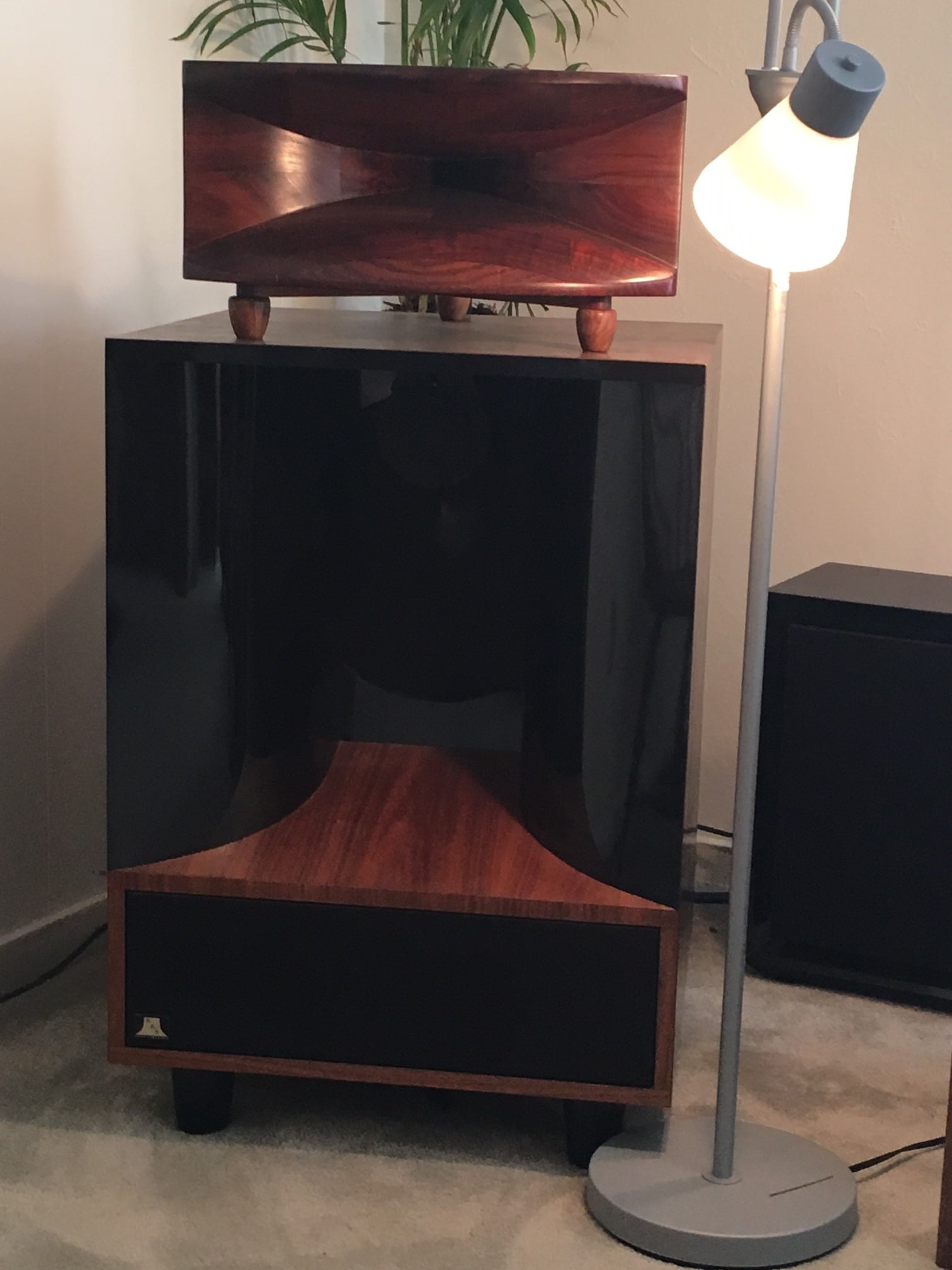 One of the Burwell speakers, in all its woody glory.
One of the Burwell speakers, in all its woody glory. A bunch of old Altec horns and brand new solid wood ones.
A bunch of old Altec horns and brand new solid wood ones.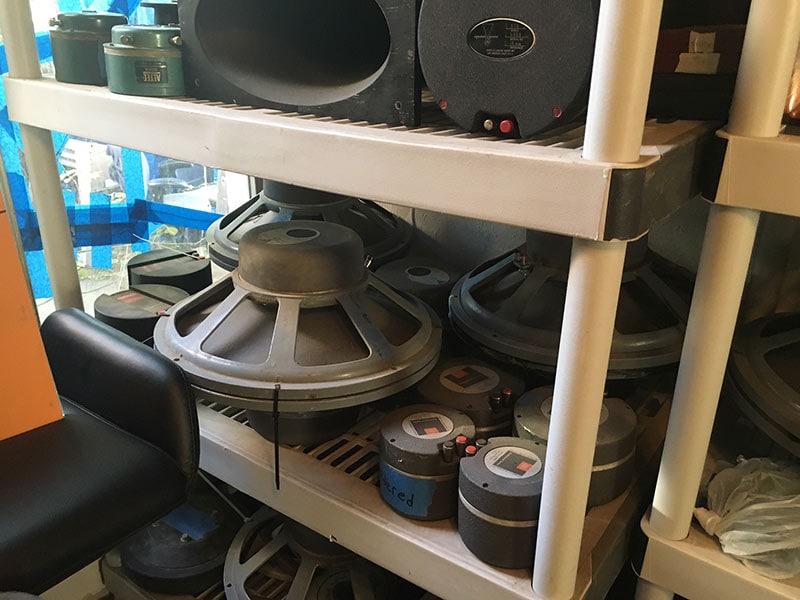 Vintage JBL and Altec drivers.
Vintage JBL and Altec drivers.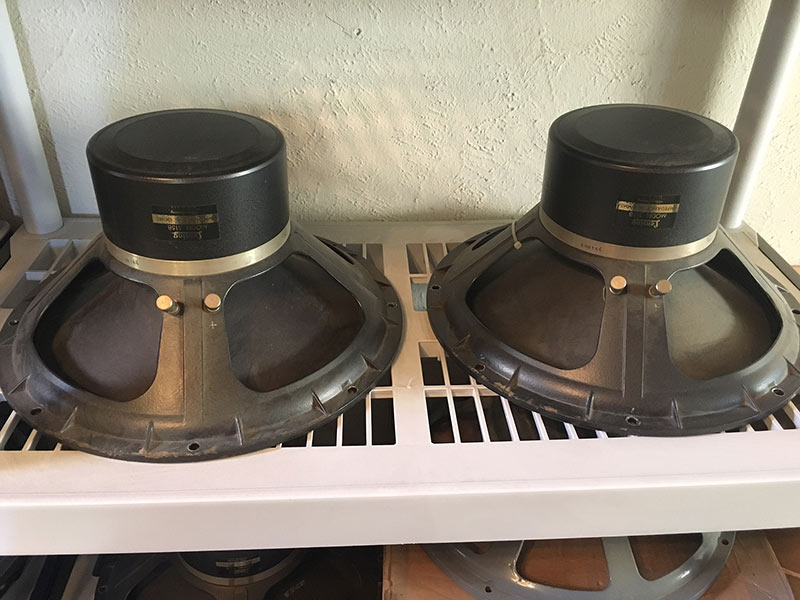 A pair of very early Altec-Lansing 515 woofers.
A pair of very early Altec-Lansing 515 woofers. Overhead view of the Burwells' beautiful solid wood midrange horn.
Overhead view of the Burwells' beautiful solid wood midrange horn.http://www.burwellspeakers.com/
Heading closer to the city, we visited my old friend Cookie Marenco at OTR Studios, the base of operations for Blue Coast Records and her download empire. Given Cookie’s earthy persona, her studio’s homey vibe comes as no surprise. I’ve been to a lot of studios, and OTR is of the make-the-musicians-comfortable variety, rather than the space shuttle/clean-room/ isolation booth feel of some studios.
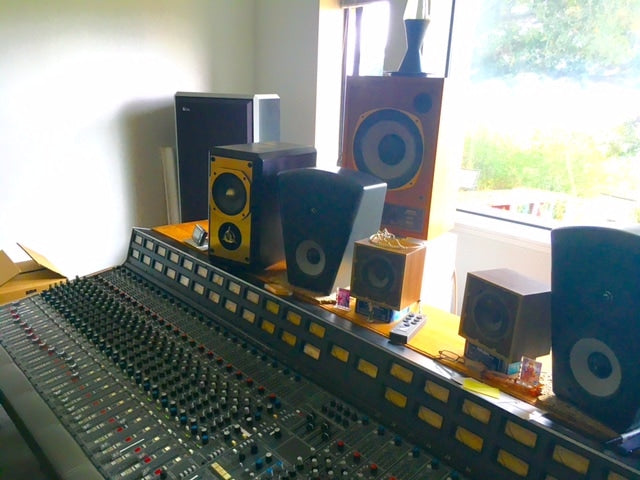 Cookie's mixing console at Blue Coast
Cookie's mixing console at Blue Coast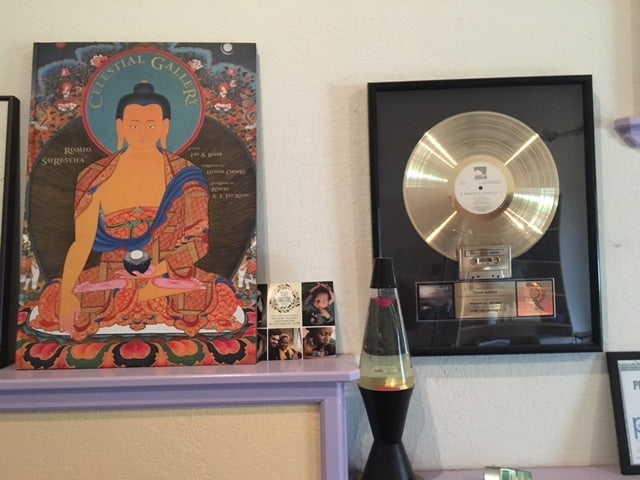 Buddha, Lava Lamp, and a gold record--the perfect studio feng shui!
Buddha, Lava Lamp, and a gold record--the perfect studio feng shui! Cookie Marenco
Cookie Marenco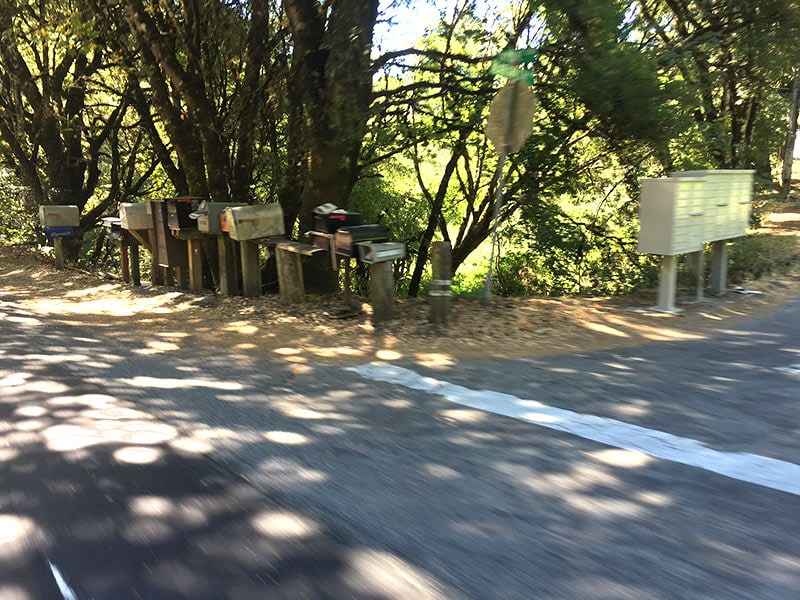 Neil Young's old ranch is waaaaay down that road.
Neil Young's old ranch is waaaaay down that road. Type 57 Bugatti. We're not worthy.
Type 57 Bugatti. We're not worthy.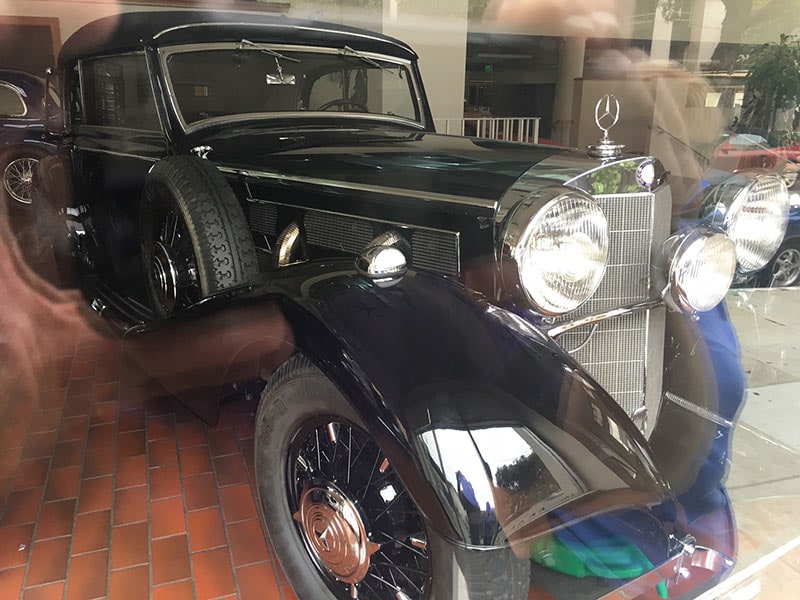 Grosser Mercedes, like Der Fuehrer used to love.
Grosser Mercedes, like Der Fuehrer used to love. A swoopy, Pebble Beach-winning 1938 Talbot-Lago T150-C.
A swoopy, Pebble Beach-winning 1938 Talbot-Lago T150-C.SO suggested a visit to the Cable Car Museum, which not only has an interesting variety of historical displays, but acts as the hub for the cable system. The cable car system was devised, not surprisingly, by a maker of wire ropes and cables. It is ingenious, if Rube Goldberg-esque in its complexity.
I once confused cable cars with trolleys, but they’re not the same at all. Trolley Cars generally have an overhead electric line which connects to the car by way of an antennae-like feeder arm which conveys the juice to electric driving motors. Cable cars have a remote power plant with engines or motors (in SF, originally steam engines–now each line has a 500 HP GE electric motor) which drive giant pulleys called sheaves. The sheaves transmit force to a cable 1 ¼” in diameter which runs underground, routed by a series of pulleys, guides, and idlers. The cars are propelled by a plier-like “grip”, operated by the motorman, which actually increases or lessens the grip on the driven cable, which pulls the cable car along.
There are four separate lines in the SF cable system; all four are driven from the powerhouse at the Cable Car Museum. The longest line is nearly four miles long; the shortest, just under two miles. Think about the network of pulleys, guides and idlers required to route and change direction of a moving cable under the city streets—it’s amazing. The technology may seem somewhat antiquated—and it is—but it works. The cable is lubricated with pine tar, which you can smell while riding the cable cars. What do they use for brakes, going down those steep hills? Blocks of pine, pressed against the wheels. You can smell them burning when the going is tough. Two of the four cable lines, with their 500 HP motors driving 8 1/2' sheaves.
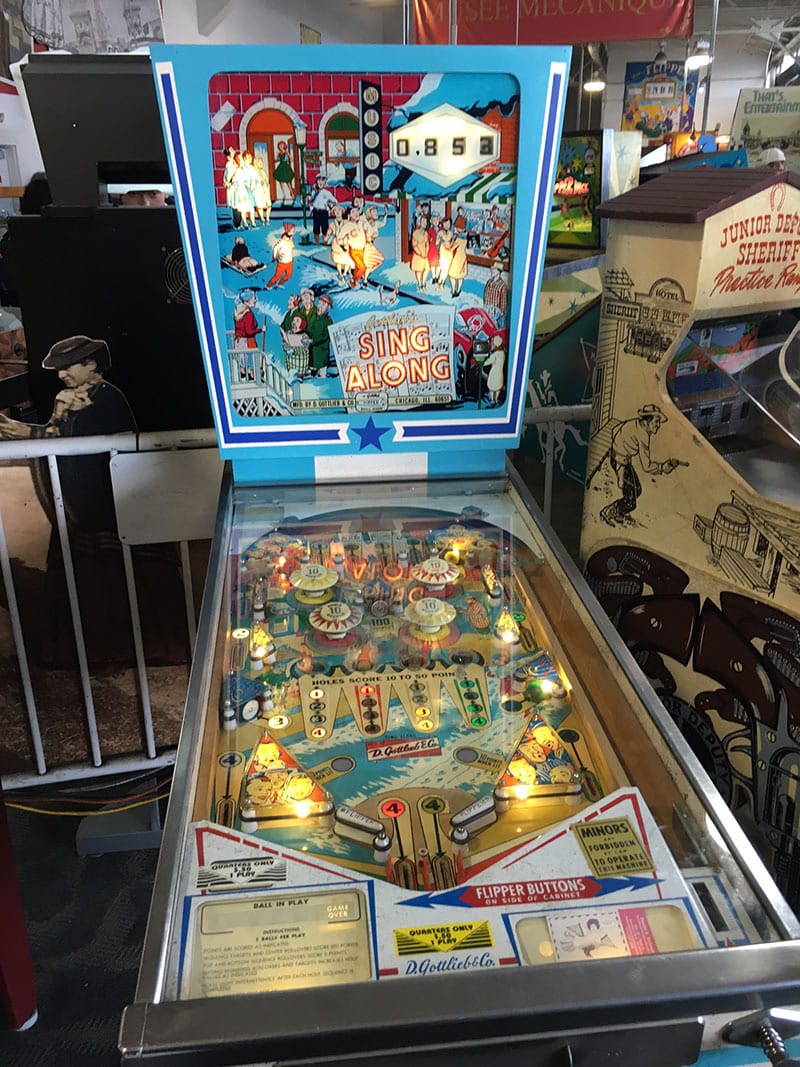 I wasted a lot of hours on one of these, back in high school....
I wasted a lot of hours on one of these, back in high school....http://www.cablecarmuseum.org/
Finally, down at Fisherman’s Wharf there is an arcade rather grandly entitled Musee Mecanique, which features mechanical games and devices from the penny arcade eras. Much of it was familiar stuff for me; one piece which was very familiar indeed was an old Gottlieb Sing Along, a pinball machine I spent many hours mastering during my high school years. Even mechanical devices can generate emotional attachments!
http://museemecaniquesf.com/


